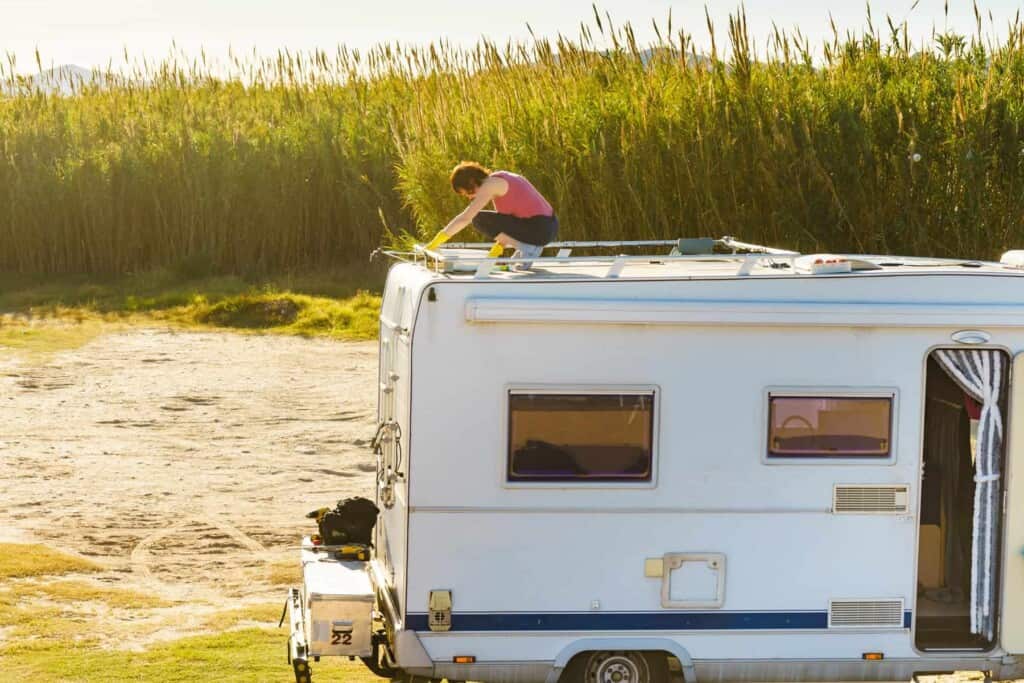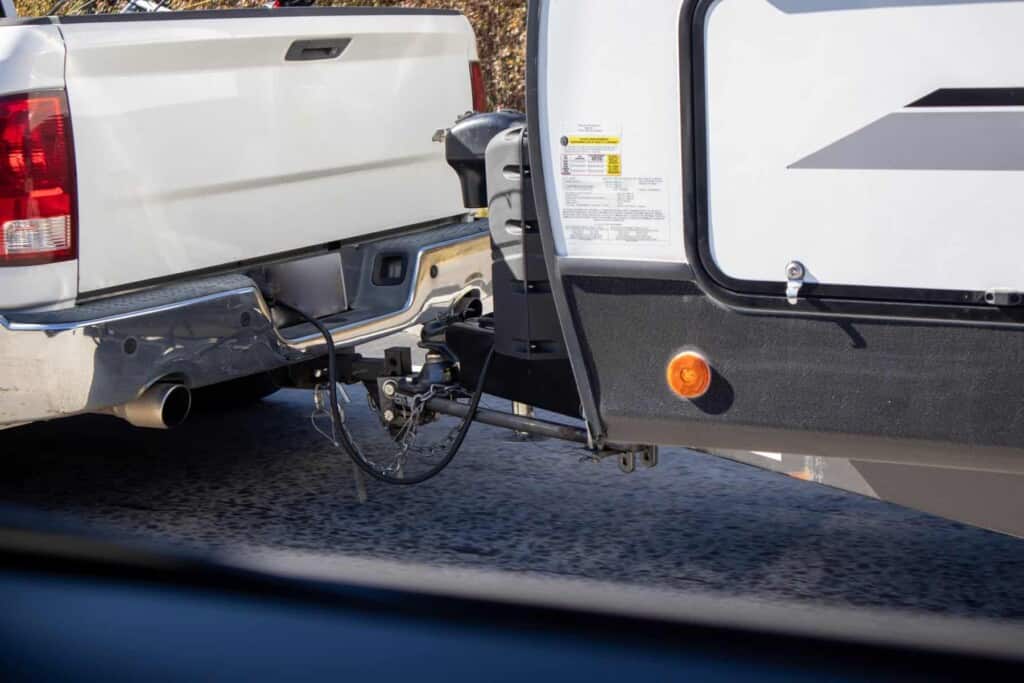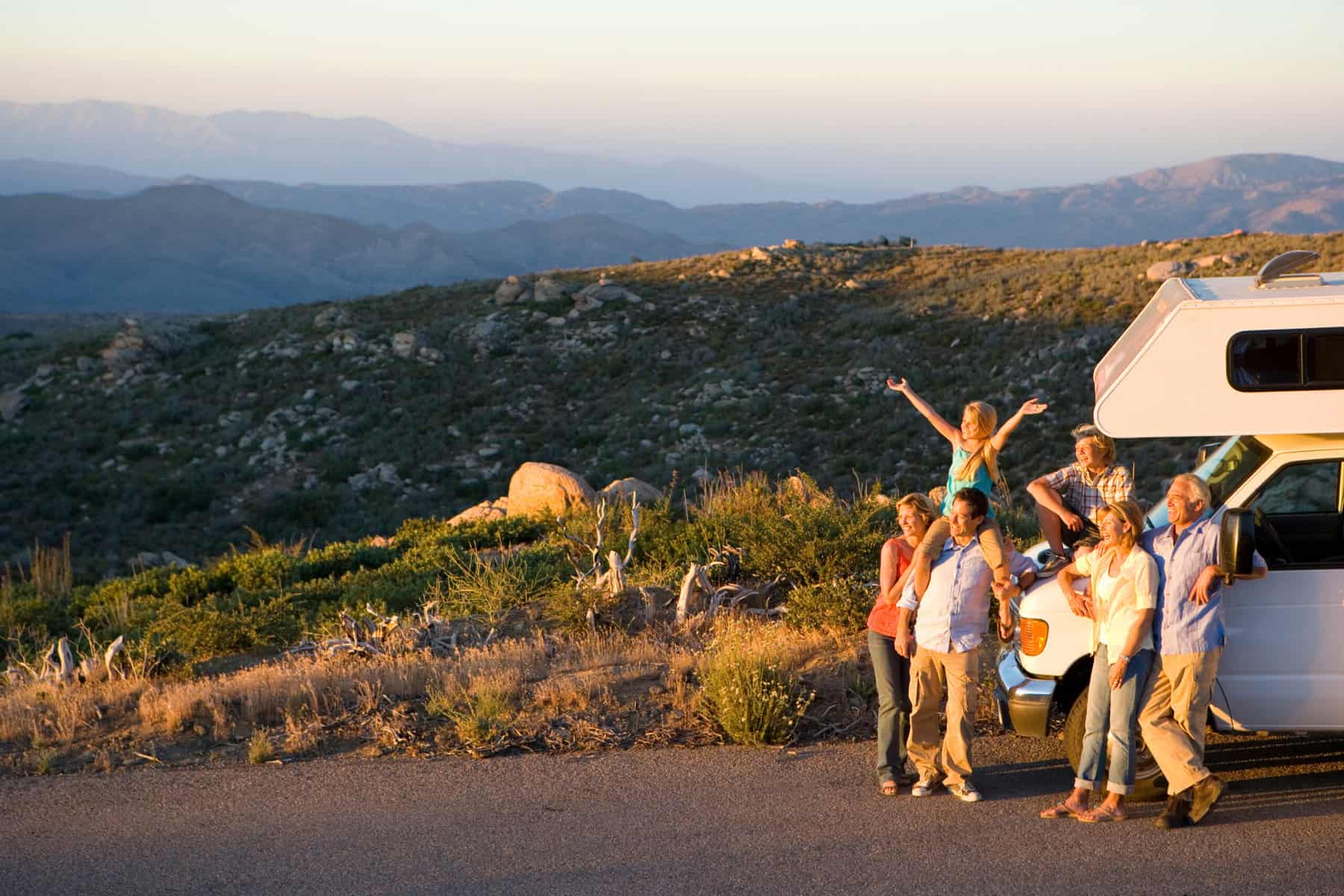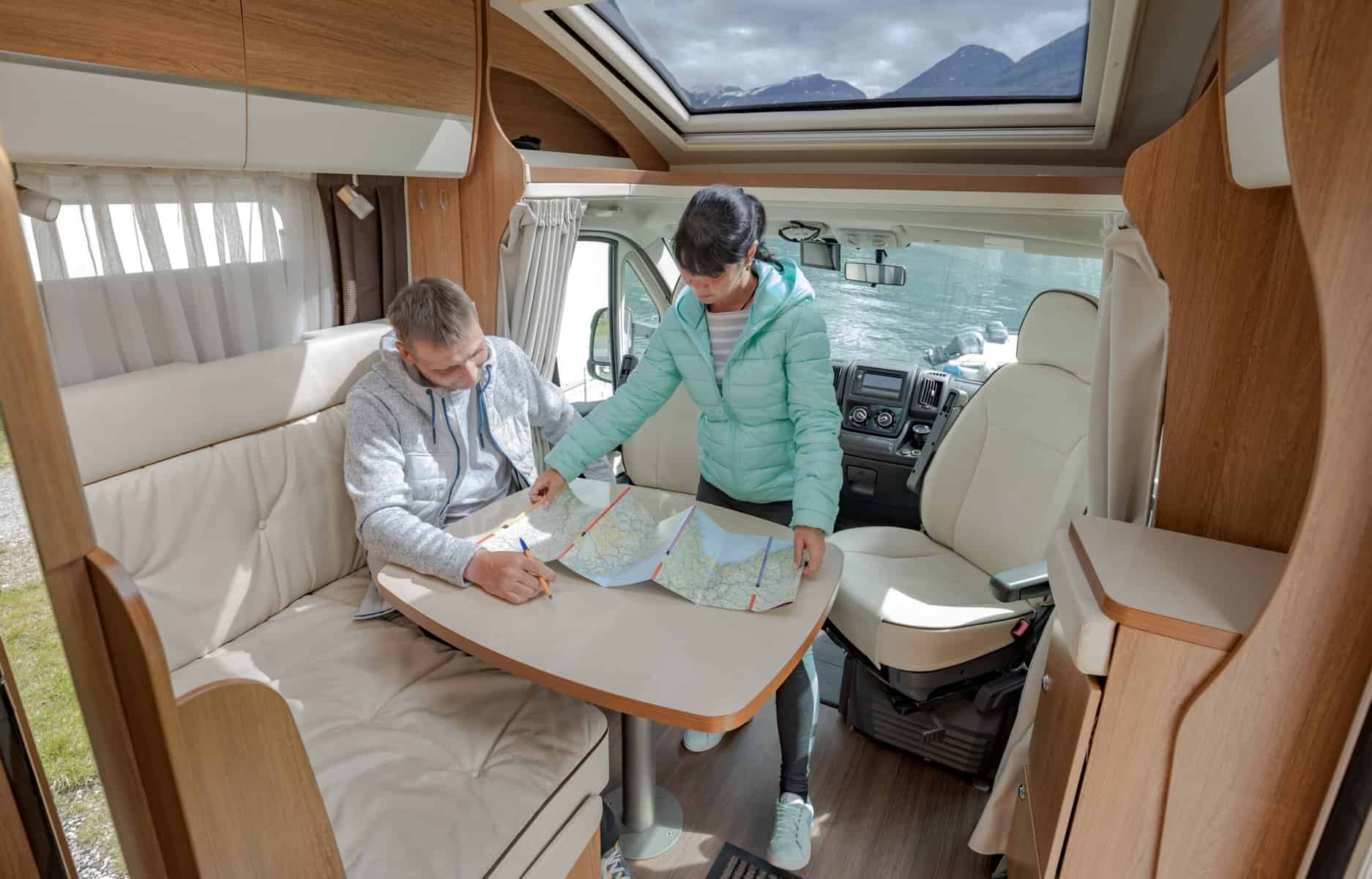Campsite breakdown is the last thing you want to think about on a fun Saturday night around the campfire. But when the last campfire embers burn out and Monday morning creeps closer, you know that all good things must come to an end. Sunday morning, it’s time to break down your campsite. Here’s my list of tips for a quick, hassle-free way to get to your next RV destination.
Campsite Breakdown Tips from a Full-time RVer
It can be tempting to take shortcuts because you’re eager to hit the road. But staying organized during campsite breakdowns is critical. Even after full-time RVing for over two years, we still go through a campsite breakdown checklist.This ensures we are safe and don’t forget any of our belongings and camping gear. Following a good checklist also ensures a safe, happy arrival at the next destination.
Each RV has specific needs for its leveling system, tanks, towing/driving specifications, and more. But generally speaking, this campsite breakdown checklist applies to most RVs. Here’s a rundown of the checklist we use for our travel trailer:
Check the Weather and the Clock
Is a torrential downpour is in the forecast for the next day? If so it’s best to tackle most of your breakdown tasks the day before. Nothing is worse than trying to complete a checklist with cold rain and mud blurring your focus. Are you planning to make an early exit from the campground to start your travel day? If so, your neighbors will appreciate it if you break down your campsite the night before.
Leave No Trace
Nobody enjoys finding a bag of dog poo on the picnic table or beer bottles in the fire ring. This is why it’s essential to adhere to the Leave No Trace principles. You may have heard this mantra many times while enjoying a nature hike or lake paddle. This rule also applies at the campground.
- Clean your site of trash. This includes anything tossed into the fire ring,
- Always ensure that the next camper at your site has a wonderful experience, too.
Look Around the Campsite
Have you stowed your outdoor tablecloth? Is your screen house securely stowed? Did you retrieve your bathing suit that was drying in the sun across your tire cover? Take your time and inspect your campsite for any of your personal items or obvious items.
Go Inside the RV to Prep for Travel
Each time you check out of a campground, your home on wheels starts jostling, making turns and quick stops. So it’s crucial to organize your RV and secure your belongings before departure time. Don’t let your gear become loose missiles when you’re on the road.
In our RV, we place tension rods on cabinets without doors. Also, putting tension bars inside the refrigerator prevents jars and bottles from flying out when we open the doors. Check that appliances are stowed and countertops are completely bare, including inside the bathroom.
Also give your RV floor some TLC! Sweep well to remove anything that might get caught when the slide-out is moving. We take a broom and get underneath the carpet at the slide seals. This is just in case a rogue Lego, soda cap, or dog toy slipped underneath. Tiny items can not only damage your slide-out mechanism, but also cause deep gouges in your floor if they’re dragged in or out with the slide.
Now Inspect Your RV Tires
All RVers have cautionary tales about tire maintenance. So when we break down a campsite, we visit each RV tire with our portable air compressor. Each tire gets a PSI check when it’s cold. You don’t want to check warm RV tires, because factors like air temperature and length of your camping stay can impact tire pressure. Verify that your tire pressures are correct before you pull away. This keeps you safe and ensures optimal gas mileage for better RV fuel economy.
We also walk around each tire with a torque wrench and torque each lug nut. Visually inspecting your RV and tow vehicle tires for nails or uneven wear is also smart.
Get Up to Check Out Your RV Roof
Hopefully you are good about RV roof maintenance. Do you make it a habit to look at your seals, check for soft spots, clean your gutters, etc.? Even if you do, it’s still important to inspect an RV roof when breaking down the campsite.
Before each campsite checkout, I take a quick trip up the ladder of our trailer. The goal is to make sure there are no surprises up there. For instance, a fallen branch could cause RV roof damage when we pull away. Take a second to sweep off the slide from leaves, branches, acorns, and any other junk that accumulated during your camp stay. In my case, I’ve found a Frisbee on our roof. Another time I cleared dozens of pecans that fell after parking under a tree in south Texas. Once I even found laundry that caught the wind just right!

Bring In Your Slide Out and Retract the Awning
Even experienced RVers sometimes overlook an obvious step like this one. Don’t be that guy driving out of the park with your awning flapping in the wind. Merging onto the highway with your slide fully extended would also be a nightmare! Pay close attention to your slide for any sign of obstruction while you’re bringing it in.
Dump Your Holding Tanks and Gather Up RV Hoses.
Empty your RV holding tanks before you hit the road. Start with your black tank, then follow with your gray tank to flush out debris. Drain tanks completely. If you’ve got time, flush your holding tanks with your city water connection. Then stow your RV hoses and gather any sewer hose supports or other accessories.
Disconnect Your RV Water Hose
Turn off the city water connection and stow your fresh water hose. Don’t forget to disconnect your water pressure regulator and RV water filter too. We’ve arrived at so many campsites to find the campers before us forgot one or both of these items. This is an expensive mistake. And it’s such a bummer when you arrive at your next destination without the equipment you need.
Remove Shore Power Connections
Wait to unplug from the utility pedestal until you take these important steps. First turn off your lights, air conditioner, and water heater. If your refrigerator requires a manual transition to battery power, go ahead and flip that over as well. Only then should you unplug from shore power. Don’t forget to take your surge protector from the pedestal.
Put the Stairs Up
Now it’s time to fold in or raise your RV stairs. Then close the door and lock the handle. You’re almost done!
What to Think About When Hooking Up an RV
Whether you pull a travel trailer like we do, or hook up a toad behind your motorhome, connecting two vehicles can be intimidating for beginner RVers. But once these tasks become a habit, hooking up an RV is quick and painless.
I’m most familiar with travel trailer RVing. So here are questions we ask and tasks we double-check every time we hook up an RV.
- Is the hitch coupler securely latched onto the ball with a locking pin?
- Are chains latched and crossing each other?
- Is the trailer jack completely raised?
- Are the sway bars locked into place?
- Don’t forget your sway bars crowbar. Make sure you don’t leave it on top of your truck so you drive off and never see it again. This has happened to us and many RVers we know. It can happen to you if you don’t follow a checklist.
- Is your 7-pin or wiring harness securely attached?
- And don’t forget to check the breakaway switch (usually on your chains). Is it securely attached?

Test Your Exterior RV Lights
Wiring connections for travel trailers can be tricky. Don’t drive off until you test your running lights, brake lights, turning signals, and hazard lights. Adjust the 7-pin connection if necessary.
Take a Final Walkaround and Chock Up
Taking one more walk around the rig for a visual inspection is always helpful. Do it on your way to pull and store your RV wheel chocks. Congratulations, you just took the final step before departure.
Breaking down a campsite isn’t difficult when you get the hang of it. Give yourself enough time helps you avoid campsite breakdown mistakes. Consider assigning tasks to different members of your group. Then cross-check the major tasks to ensure safety.
Successfully breaking down a campsite in an organized way makes setting up at your next camping destination even more enjoyable! Plus, your future self will thank you the next time you find and book your next campsite with Spot2Nite



